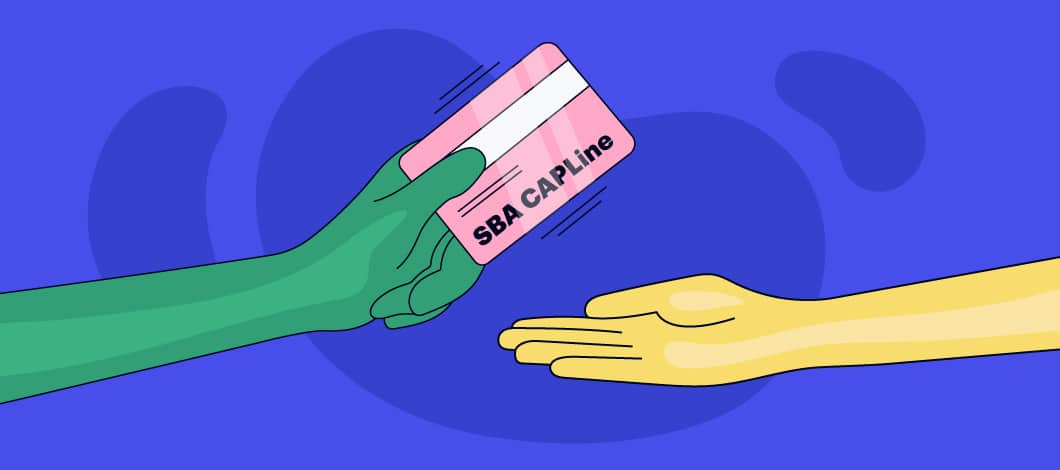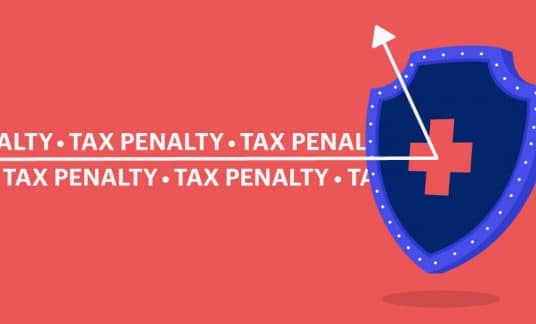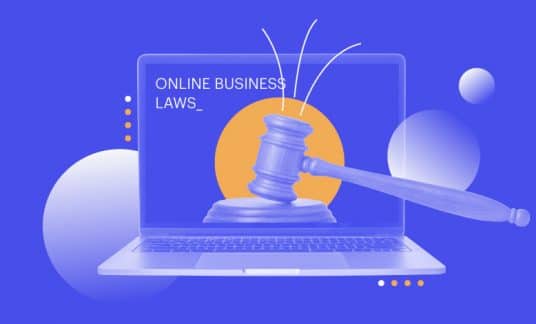Most of the time when you think of loans from the Small Business Administration (SBA), you’re thinking of their conventional 7(a) loans. These types of loans are usually set up with fixed payments of principal and interest over several years.
However, as part of the SBA’s CAPLine loan programs, the agency also has 4 types of revolving lines of credits that might be more useful in certain circumstances for your business
Let’s examine these lines of credit as well as the SBA Express line of credit to determine which type of financing might work best for your business.
What Is an SBA Line of Credit?
An SBA line of credit works like a credit card. It has a maximum amount that you can draw against, make payments and then make additional draws. The lender only charges interest on the actual balance outstanding. The maximum amount for SBA lines of credit is $5 million.
The SBA doesn’t provide the funds for the lines of credit, but the agency guarantees the loans offered by qualified SBA lenders. Typically, the SBA will guarantee 75% to 85% of the maximum line of credit.
As a result of the SBA guarantee, lenders are able to offer lower interest rates and more favorable terms. SBA guarantees 85% of the loan amount for loans less than $150,000. For loans greater than $150,000, the SBA guarantees 75% of the loan amount up to a maximum of $3.75 million.
The line of credit can be either fixed or revolving. With a revolving line of credit, the borrowing capacity gets reinstated each time you make a payment, like your personal credit card. With a fixed line of credit, the borrowing availability decreases each time you make a draw against your credit line.
What Are the Interest Rates on SBA Lines of Credit?
The SBA limits the maximum interest rates that lender can charge as follows:
For loans with repayment terms less than 7 years, it’s Prime rate plus:
- 4.25% for loan up to $25,000
- 3.25% for loans from $25,000 to $50,000
- 2.25% for loans exceeding $50,000
For loans with repayment terms more than 7 years, it’s Prime rate plus:
- 4.75% 4 for loans less than $25,000
- 3.75% for loans from $25,000 to $50,000
- 2.75% for loans exceeding $50,000
How Much Are the SBA Guarantee Fees?
SBA guarantee fees vary by the amount of the line of credit and are charged to the lender. However, the lender usually passes on these fees to the borrower. SBA guarantee fees are as follows for lines of credit:
- Less than $150,000, the guarantee fee is 2%.
- More than $150,000 but less than $700,000, the guarantee fee is 3%.
- Exceeding $700,000 to $1 million, the fee is 3.5% plus 3.75% of the excess over $1 million.
As for loan maturities less than one year, the guarantee fee is 0.25%.
How to Qualify for an SBA Line of Credit
The qualification requirements for an SBA line of credit are similar to those for a typical SBA 7(a) loan. Here is a list of conditions borrowers must meet to receive approval for an SBA line of credit:
- The company must be a for-profit and eligible business, as defined by the SBA.
- The business must be in operation for at least two years and meet SBA’s minimum size standards for its industry.
- The company must be doing business within the United States and have a physical location in the U.S.
- The business must have a good credit history, and the owner should have a personal credit score of around 660 or better.
- The principles of the business must be of ”good character” and not have a criminal record.
- The owner should have an established history of successful business management
- The financial statements of the business should demonstrate the company’s capacity to repay the loans.
- The business must be willing to pledge its property, contracts, inventory and accounts receivable as collateral for the lines of credit.
- The owner can’t be delinquent on any existing debts to the U.S. government.
- Owners must show evidence they haven’t been able to obtain financing on reasonable terms from any other source.
SBA Working Capital Line of Credit
The purpose of an SBA working capital line of credit is to finance short-term working capital needs. Drawdowns from the line of credit may be used to pay general operating expenses, purchase inventory, cover payroll and refinance other existing short-term revolving debt. The line will be structured as a revolving line of credit.
To qualify for a working capital line of credit, your business must be the type that has outstanding accounts receivable and maintains a physical inventory. Payments are connected to cash flow receipts from accounts receivable, not fixed monthly principal and interest payments.
Also, keep in mind a working capital line of credit can’t be used for floor planning, purchases of fixed assets or payment of delinquent taxes.
SBA Seasonal Line of Credit
The company’s financial statements should clearly show patterns of upticks and declines in revenues at certain times of the year. A seasonal line of credit can’t be used to finance business activities and operational costs during slow periods. It must be used to finance seasonal increases in accounts receivable and inventory that result from growth in revenues.
A seasonal line of credit must be secured with liens on accounts receivable and inventory. If the lender doesn’t feel that the collateral is sufficient, they may ask the owner to make available certain personal assets as additional collateral.
The lender likely will require certain periodic payments during the year so that the loan is fully liquidated by the end of the busy season.
SBA Builder’s Line of Credit
A builder’s line of credit is intended to provide the funds needed to construct or renovate commercial buildings or residential properties for resale. The money can be used to pay for labor, building materials, rental equipment, building permits, inspections, utility connections, landscaping and septic tank construction. The cost of land can be included if it doesn’t exceed 20% of the project’s cost.
A builder’s line of credit is available only for builders and contractors. Moreover, the company must have a history of successful bidding and constructing or renovating similar projects.
A builder’s line of credit has a maximum term of 5 years, not 10 years like the other SBA CAPlines of credit. The lender will secure the loan by using the property of the project as collateral.
If you use the funds for a specific project, you must repay the loan within 36 months of completing the project or selling the property, whichever time period is shorter.
SBA Contract Line of Credit
An SBA contract loan is designed to finance the materials, labor and supplies needed to fulfill a specific contract or purchase order that may be larger than orders the company has handled in the past.
Note that your business must be able to show that you have performed similar contracts or purchase orders successfully in the past. You need to be able to demonstrate that your business has the technical expertise to complete a project on time and make a profit.
You can repay a contract loan that is related to a specific project when your client pays you. You’re not required to meet a fixed repayment schedule that doesn’t match the cash flow of the project.

What Is an SBA Express Line of Credit?
If you need funds quickly, an SBA Express line of credit might be the answer. The SBA offers a 36-hour turnaround for loan approval for its Express Loans instead of the several months it normally takes to get approval for a conventional SBA loan. The approval process takes less time because the Express program requires fewer documents and involves lower loan amounts.
Lenders charge higher interest rates for SBA Express Loans because the SBA only guarantees 50% of the loan amount.
SBA Express line of credit terms have higher interest rates and lower maximum limitations than other SBA loans. The maximum loan amount is $350,000 with repayment terms up to 7 years.
Interest rates charged by lenders are limited to prime plus
6.5% for loans less than $50,000 and prime plus 4.5% for loans exceeding $50,000. Regular SBA 7(a) guarantee fees apply to Express Loans.
Funds can be used as a revolving credit for working capital and seasonal financing needs.
Note that the qualification requirements are the same as those for the SBA 7(a) loans.
How to Apply for an SBA Line of Credit
If you feel that one of the SBA CAPLines of credit is the type of financing you need for your business, here are the steps to apply.
Verify Your Eligibility
Make sure your business is eligible and meets the SBA’s definition of a small business. The SBA sets a maximum number of employees and minimum revenue that vary by the type of industry.
Select a Program
Choose which of the 4 SBA cap lines of credit will meet your financing needs.
Find a Lender
As the SBA doesn’t provide loans, you’ll need to locate an SBA qualified lender in your area. You should contact several SBA CAPLine lenders to find the one that offers you the best rates and terms.
Get your Documents Together
Prepare a business plan to present to the lender that specifies how much you want to borrow and how you plan to use the funds.
With this in mind, include the following:
- Most recent financial statements including balance sheet, profit-and-loss statement and cash-flow statement
- Financial projections for the next 3 years
- Business tax returns for the last 2 years
- Personal financial statements by the last 2 years of all owners
- Business resumes for each owner
- Proof of ownership
Complete the Application
The application will include a summary of each executive’s background, each owner’s percentage, details of any other government debt that the business owes and a plan on how your business will repay the loan.
Complete Additional Forms
Note that depending on your choice of lenders, you may be asked to complete these additional SBA forms:
- SBA Form 1919 – Borrower information form. This form gives the SBA and your lender basic information about the business, relationships to any affiliated businesses and details about the owners.
- SBA Form 413 – Personal financial statement – This form goes into more detail than the standard form you’ll see at most banks. This SBA form asks for more details about your household assets, liabilities, real estate and life insurance policies.
- SBA form 159 – Fee disclosure form – If you’re paying an agent to prepare and submit your SBA application, the SBA requires you to complete this form. It’s the SBA’s way of alerting borrowers about unnecessary or flagrant fees and charges.












